|
The Turtle
Sanctuary
In
our quest to find something unique on each of the islands we visit to write
a blog about - here on Bequia we found two - this sanctuary and a whaling
museum. Whilst we are against commercial whaling Bequia is allowed to catch four
a year (most years they get one), read the fascinating history in it's own blog,
just six men in a row boat against a huge humpback.
To
get a driving permit here costs 100EC, that's before finding out the cost of a
hire car, as the island is so small we asked Terry one of the taxi men what the
trips would cost. 80EC return for the turtles. 60EC return for the whaling
museum and he would wait for us as long as we wanted to bimble around. So off we
went.
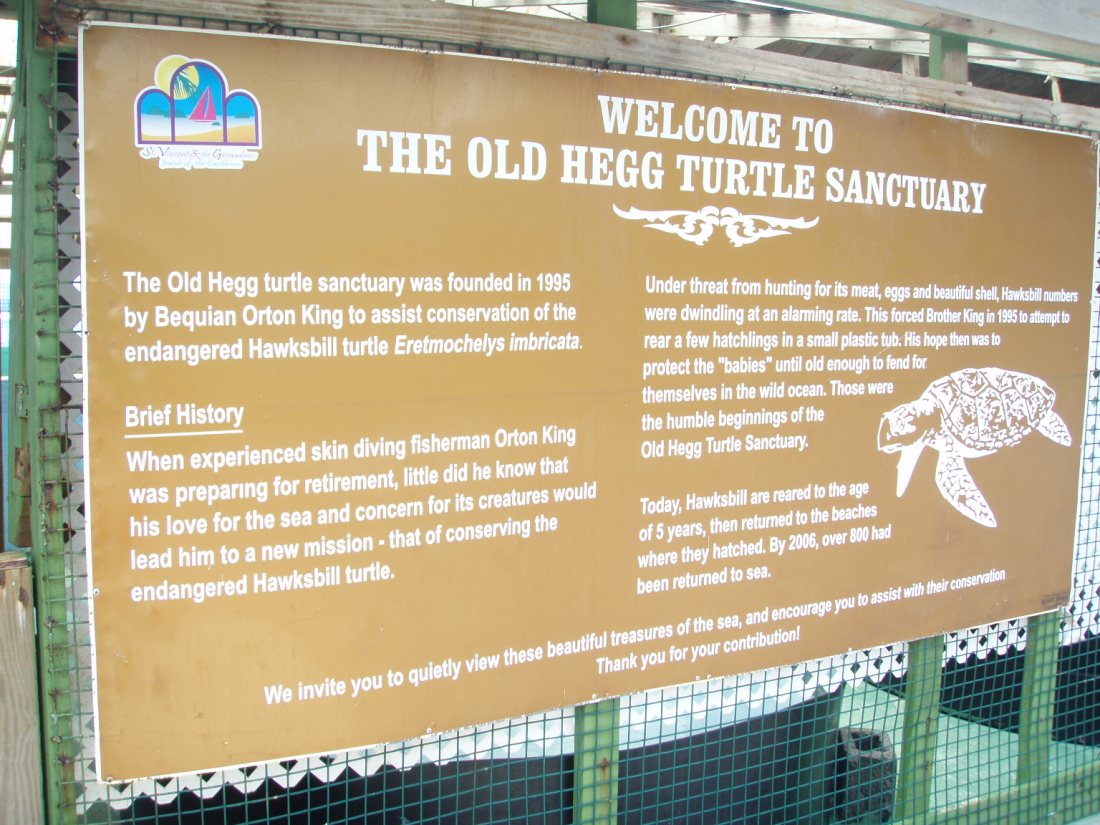
As the sign says Brother Orton
set up this sanctuary in August 1995 on Industry Bay, on the north east coast of
Bequia. Hawksbill Turtles hatch and the average to reach five years of age is
one per thousand, Brother Orton achieves fifty per hundred. He and his helpers
wander the beaches to find nests and mark them, at hatching time he scoops the
babies up and takes them to their temporary home and tends them until the age of
five.
 
What struck us immediately was
the varying colours and patterns of their
shells
The hawksbill turtle
- Eretmochelys imbricata is a critically endangered
sea turtle belonging to the family Cheloniidae. It is the only species in its genus. The species has a worldwide distribution, with Atlantic
and Pacific subspecies. Eretmochelys imbricata imbricata is the Atlantic
subspecies, while Eretmochelys imbricata bissa is found in the Indo-Pacific
region.
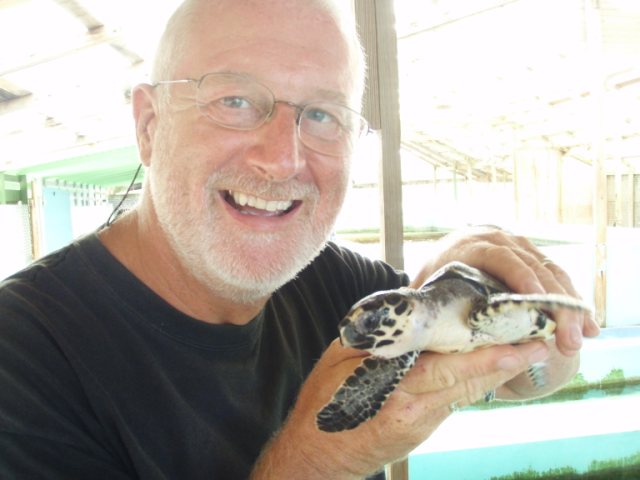
Bear and a one
year old.
The hawksbill's appearance is
similar to that of other marine turtles. It has a generally flattened body
shape, a protective carapace, and its flipper-like arms are adapted for swimming in the open ocean. Eretmochelys
imbricata is easily distinguished from other sea turtles by its sharp, curving
beak with
prominent tomium, and the saw-like appearance of its shell margins. While the turtle lives a
part of its life in the open ocean, it is most often encountered in shallow
lagoons and coral reefs where it feeds on its chosen prey, sea sponges. Some of the sponges eaten by hawksbill's are known to be highly
toxic and lethal when eaten by other organisms. In addition, the sponges that
hawksbills eat are usually those with high silica content, making the turtles one of few animals capable of eating
siliceous organisms. They also feed on other invertebrates, such as comb jellies and jellyfish.

Me and the latest
edition to the family, he stuck his flippers up and held
perfectly still for his photo.
Because of human fishing
practices, Eretmochelys imbricata populations around the world are threatened
with extinction and the turtle has been classified as critically
endangered by the World Conservation Union. Several countries, such as China and Japan, have valued hunting hawksbill turtles for their flesh, which is
considered good eating. Hawksbill turtle shells are the primary source of
tortoise shell material, used for decorative purposes. By the Convention on
International Trade in Endangered Species, it is illegal to capture and to trade in hawksbill turtles and
products derived from them in many nations.

Bear and a four
year old
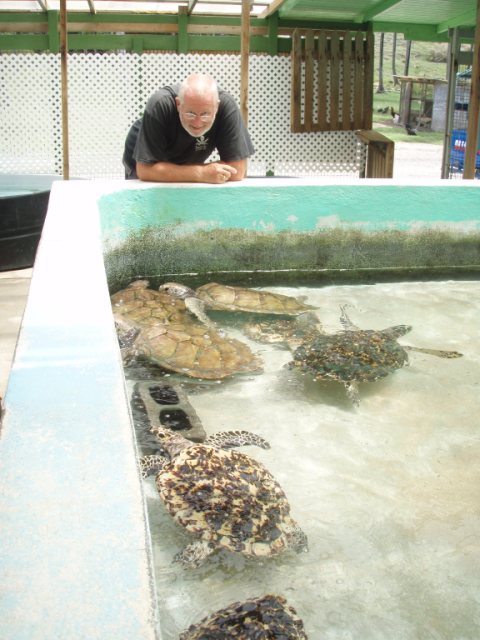
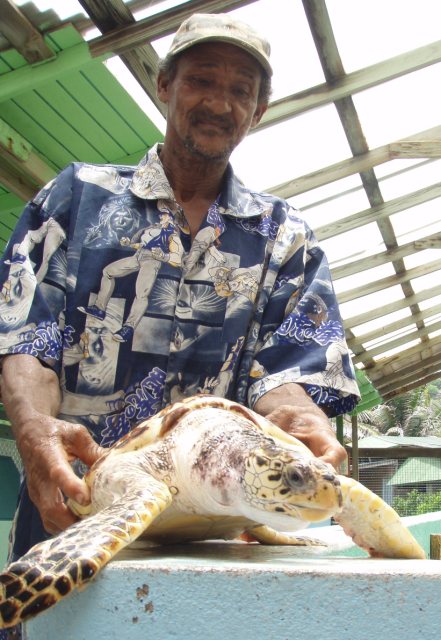
Bear
saying hello to those in "the big tank", most of these will be released
next year, with a trade-mark hole drilled at the tail end of the shell. When
divers meet these in the wild they feed back to Brother Orton so he can track
their whereabouts. Brother Orton was in St Vincent for the day so his assistant showed us
around.
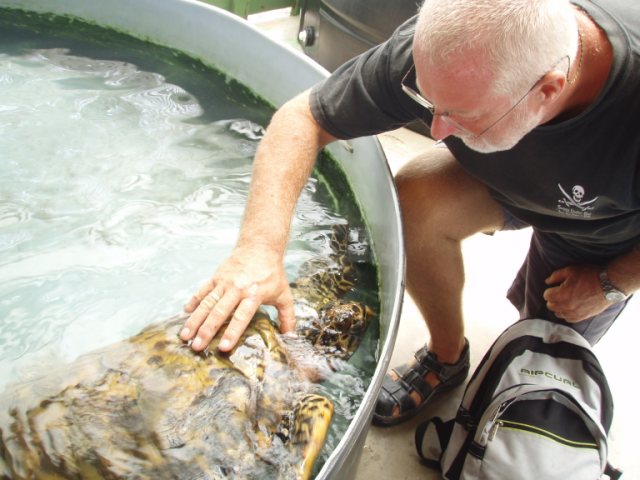
Bear was amazed to find their neck was "squadgy".
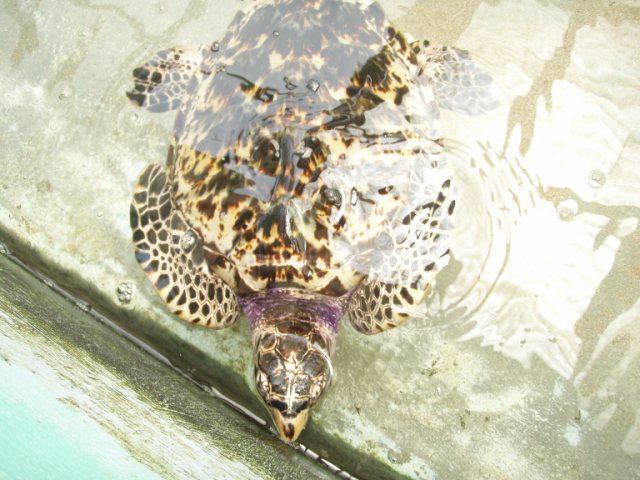
This
chap had been in a fight and had to have gentian violet put on his
wounds, we also met one who had lost a flipper in a fishing net, both expected
to be released soon.

I listened attentively to why he
was segregated for being 'too tame' to be returned to the wild. "I've been here fifteen years and I'm the only permanent
resident but full board here is great, five star in fact"
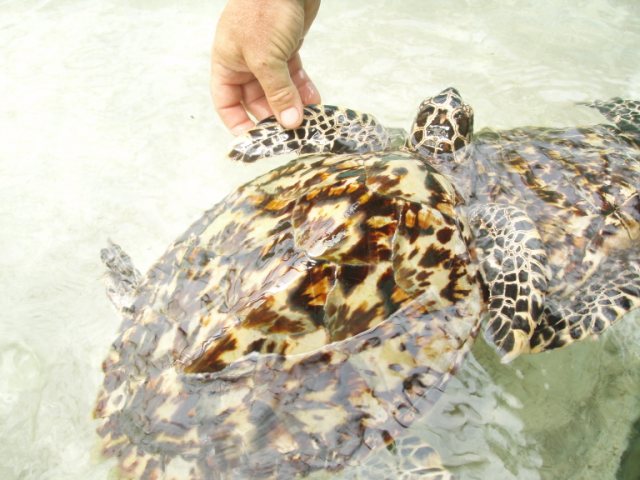
Bear saying
"farewell" to these beautiful creatures.
ALL IN ALL AN AMAZING
PLACE - WELL WORTH A VISIT - AND A DONATION.
| 











